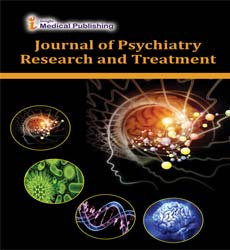A new hypothesis on the pathophysiology of psychiatric disorders and its relates to the treatment and prevention of chronic disease
Abstract
Short of a clear understanding of how psychiatric symptoms are produced, the various cognitive, emotional, and behavioral patterns that characterize psychiatric disorders continue to be grouped into syndromes and treated accordingly. However, an emerging hypothesis contends that psychiatric symptoms are driven by pathological hyperactivity in symptom related circuits in the brain. According to the Multi-Circuit Neuronal Hyper excitability (MCNH) Hypothesis of Psychiatric Disorders, persistent firing in anxiety circuits causes persistent feelings of anxiety; persistent firing in depressive circuits causes persistent feelings of depression; persistent firing in cognitive circuit’s cause’s ruminative and obsessive thoughts; etc... This pathological circuit-specific hyperactivity is believed to be the consequence of a genetically-transmitted failure of the neurological system to self-regulate when perturbed by a psychological, emotional, or biological stressor. The failure of neurons to shut off is also believed to drive a chronic hyper-activation of the autonomic nervous system, the hypothalamic-pituitary-adrenal system, the immunologic system, the metabolic system, and various other systems of the body, thus explaining the link between upper-end-ofnormal resting vital signs and the development of any of a wide range of chronic diseases, such as anxiety disorders, mood disorders, diabetes, high blood pressure, heart disease, autoimmune diseases, and cancer. This presentation will discuss the enormous implications that this has for the treatment and prevention of nearly all illnesses, both psychiatric and medical. It will also discuss the source of the abnormality and a simple, objective means by which persons at risk can be identified. In an era of smartphones, wearable devices, and a growing public desire to prevent rather than react to illness, the ability to use resting vital signs to identify the fundamental driver of both mental and physical illness could usher in history’s greatest campaign in the fight against sickness and disease.
Open Access Journals
- Aquaculture & Veterinary Science
- Chemistry & Chemical Sciences
- Clinical Sciences
- Engineering
- General Science
- Genetics & Molecular Biology
- Health Care & Nursing
- Immunology & Microbiology
- Materials Science
- Mathematics & Physics
- Medical Sciences
- Neurology & Psychiatry
- Oncology & Cancer Science
- Pharmaceutical Sciences
